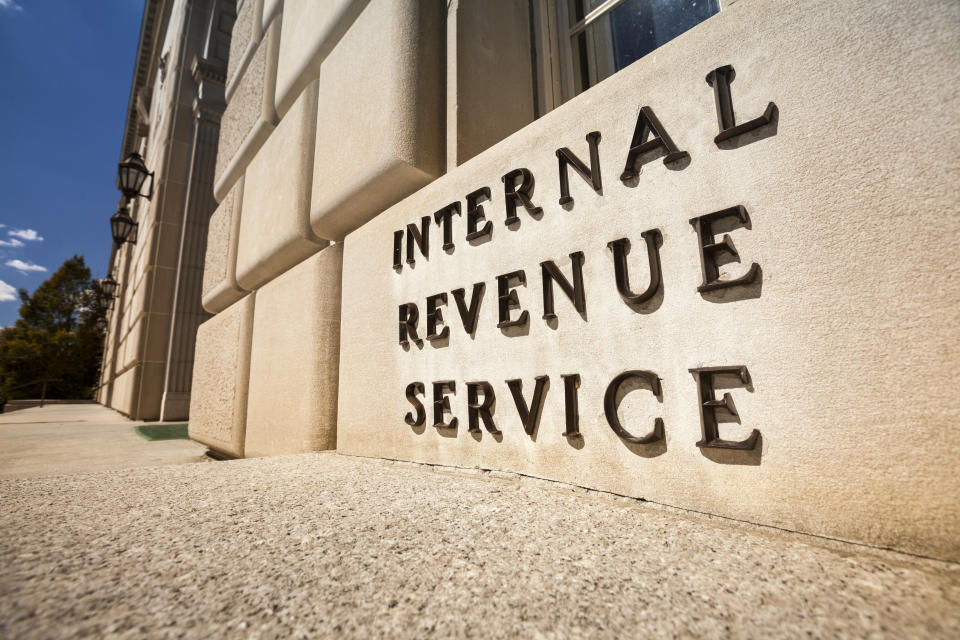Trump’s payroll tax deferral is supposed to start today — but won't for many workers
President Donald Trump’s executive memorandum deferring payroll taxes technically goes into effect Tuesday, but many employers may not offer the option to defer until later in September or even October because of late government guidance on implementation.
The Treasury Department and the Internal Revenue Service (IRS) released guidance on how to implement the deferral on Friday, leaving just one business day for employers and payroll processors to get their payroll systems ready.
Read more: Everything you need to know about Trump’s payroll tax deferral
Some employers may forgo offering the deferral altogether, which is an option.
“[Employers] inherit all of the liability, all the responsibility, and all the workload associated with repaying the deferred amounts,” Pete Isberg, vice president of government affairs at ADP, the massive payroll solutions company, told Yahoo Money. “That’s great from an employee’s perspective, but it might affect whether employers are interested in doing this in the first place.”
ADP plans to be ready to process deferrals starting in early September, according to Isberg. Other employers, especially those who process their own payrolls, may not be able to offer the deferral until late September or even October.
Read more: Payroll taxes, explained
“Social Security taxes were designed in payroll systems to administer a single tax rate that is applied to everybody equally for the whole year,” Isberg said. “And here, we’re making a rate change for part of a year in the middle of a quarter and it applies to some employees. That’s a lot of work to do with one business day to do it.”
Some employers have already processed payrolls for the first week of September, missing the first paycheck that the deferral could be applied towards.

‘Do you want to do this?’
The guidance on Friday cleared up eligibility requirements, which was the simple fix, Isberg said. Like the president’s memorandum stated, employees who make less than $4,000 biweekly can keep the 6.2% tax they would normally pay into Social Security, starting Sept. 1 and ending Dec. 31 of this year. There was no phase-in for those making just over the maximum.
But employers are shouldering the liability for the payback of the deferral, since Congress has not forgiven the deferral. To do that, employers must withhold double the Social Security tax in paychecks from January to April for workers who opt for a deferral.
That requires employers to calculate the total deferral amount for each eligible employee who wants to opt in, so that enough is withheld in next year’s paychecks to satisfy the tax requirement.

Second, employers must make it clear to employees that while they will have more in their paychecks for the rest of this year, they will get smaller paychecks in the first four months of 2021, since employers are withholding more tax.
About 100 million workers are eligible for the deferral, Isberg said, but not all may not want to opt in. Employers would need to track who opts in and who doesn’t, along with potentially allowing workers to opt back out later in the year after originally choosing to defer.
“They’re going to want to also ask each employee separately: ‘Do you want to do this?’” he said. “Because some employees are going to look at it and say: ‘It’s just a deferral.’”
‘Very abbreviated, very accelerated programming change’
Employers also must report any workers’ deferred wages accurately to make sure enough is collected next year to cover the deferral. If the reporting is not accurate, employers could be assessed for any unpaid taxes next year.
This kind of program change would typically require months of testing to make sure there were no unintended consequences, Isberg said.
“So this is a very abbreviated, very accelerated programming change,” he said, “which is risky.”
Janna is an editor for Yahoo Money and Cashay. Follow her on Twitter @JannaHerron.
Read more:
Workers will see smaller paychecks next year under Trump's payroll tax deferral
President Trump's payroll executive order could leave Americans with 'substantial tax liability'
The IRS is failing to collect billions in back taxes owed by super rich Americans
Tax expert: Americans who don't file leave ‘billions of dollars’ on the table
Read more personal finance information, news, and tips on Cashay

 money
money 

